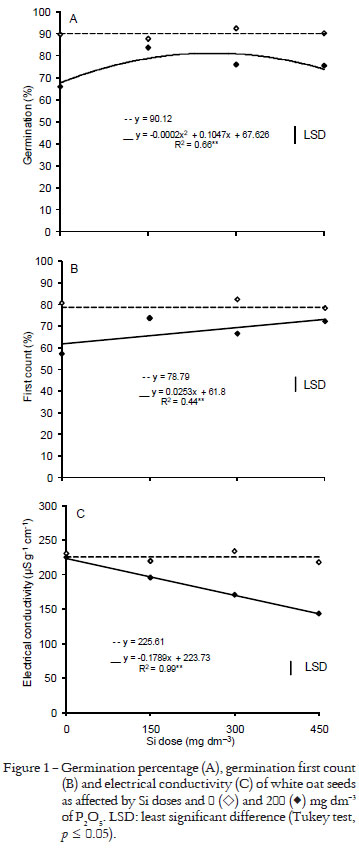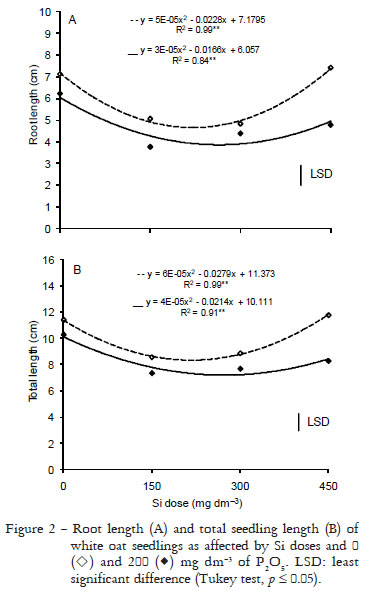Silicon (Si) fertilizers have been increasingly used in agriculture due to several benefits as acidity correction in tropical soils and positive effects on the development of grasses. Nutrient availability and plant nutrition play an important role in seed production and may affect the physiological quality of white oat seeds. The present study had as objective to evaluate seed germination and seedling development of white oat (Avena sativa L.) affected by silicon and phosphorus fertilization. The experimental design was the completely randomized, analyzed as a factorial 2 x 4, with six replications. Treatments consisted of 20 and 200 mg dm-3 of P2O5, applied as triple superphosphate, combined with 0, 150, 300 and 450 mg dm-3 of Si, as potassium silicate. The experiment was carried out in greenhouse, with seven plants per 15-L pot. Panicles were harvested and threshed manually and white oat seeds were stored in paper bags under normal environmental conditions. Seeds were evaluated by moisture content, seed weight, germination, electrical conductivity, seedling length and dry matter. White oat seeds with better quality are produced with 20 mg dm-3 of P2O5 under any Si doses. Higher seed germination and vigor is obtained with 300 and 450 mg dm-3 of K2SiO3, respectively. Silicon doses decreased root and total seedling length similarly up to the dose of 300 kg ha-1 but P dose only influenced seedling development distinctively whenever applied with the higher silicon dose.
Avena sativa L; germination; vigor; plant nutrition




